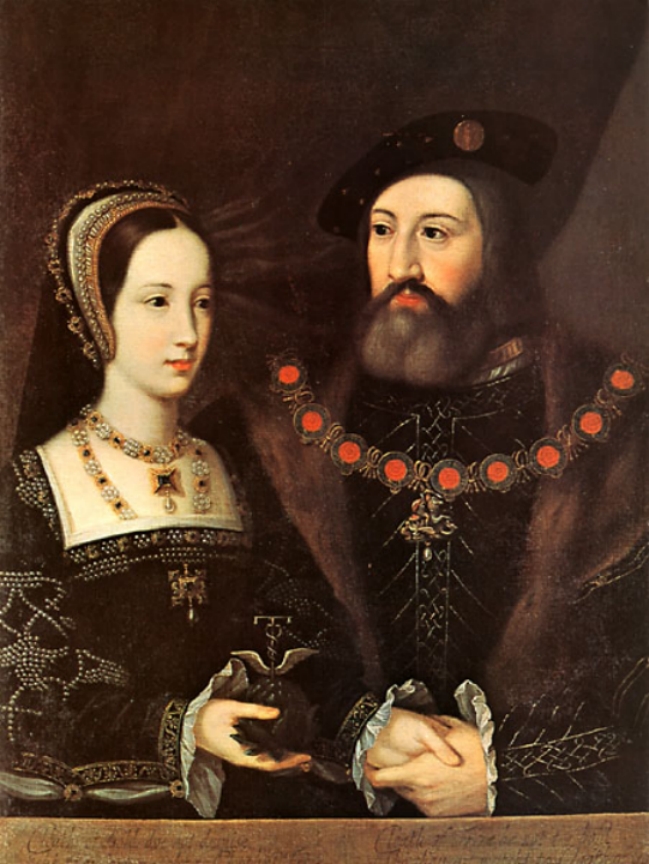 |
| Mary Tudor and Charles Brandon |
Mary Tudor was born in 1496, nine years after her father, Henry VII, had become king of England by defeating Richard III at Bosworth in 1485. Mary Tudor is often confused with Mary I, who was queen of England from 1553 to 1558, and with Mary, Queen of Scots. However, Mary Tudor, the daughter of Henry VII, would be queen in her own right.
Mary was born in the age of great dynastic marriages when a king contracted for marriage of his daughter to benefit his kingdom. Mary was at first intended to wed Charles of Anjou, who would later become Charles V, the most powerful European monarch of his time.
The contract, originally made by Henry VII, was renewed on the October 17, 1513, by Henry VIII at a meeting with Margaret of Savoy at Lille, with the wedding being set for the following year.
  |
But the Emperor Maximilian I, to whom Louis XII
Henry VIII
Henry joined the Holy League against France and went to war. While he was involved in France, his brother-in-law James IV of Scotland, who was married to his sister, Margaret Tudor, invaded the north of England. However, Henry had left the capable Thomas Howard to face any threat from Scotland. James IV was defeated and killed at Flodden on September 9, 1513.
The victories at the Spurs and Flodden made both France and the Holy Roman Emperor reconsider the marriage plans of Mary Tudor. Obviously, Henry had proved it was not wise to have him as an enemy. A diplomatic settlement was reached.
Cardinal Thomas Wolsey contracted for Mary to wed King Louis XII. His queen, Anne of Brittany, had died in 1514, making him a desirable spouse for Mary. The two were wed on January 1, 1515, but Louis XII died three months later.
Mary had developed an intense love for Charles Brandon, duke of Suffolk. His marriage to Margaret Neville Mortimer had been annulled, and his second wife, Anne Browne, died in 1512. At the time of the Battle of the Spurs, he was engaged to an orphan girl.
Henry VIII knew about the love between Charles and Mary. Moreover, Francis I learned of it when Mary told him of her true feelings when he attempted to marry her off to one of his relatives. As Louis XII’s widow, Mary had become a valuable diplomatic asset to Henry again, and she feared that he might try to marry her to another royal suitor.
Mary was determined she and Charles would not be parted. In February 1515, they were married in Cluny Chapel in France. In May 1515, as a mark of royal favor, the couple was wed a second time in England; Henry VIII and his queen, Catherine of Aragon